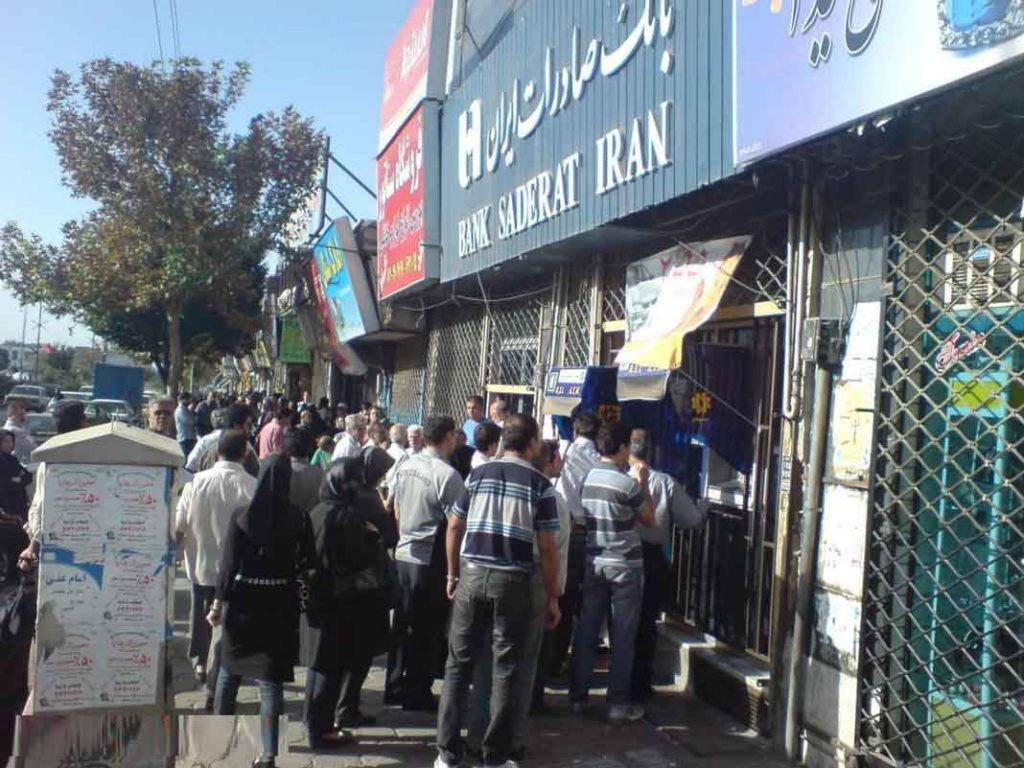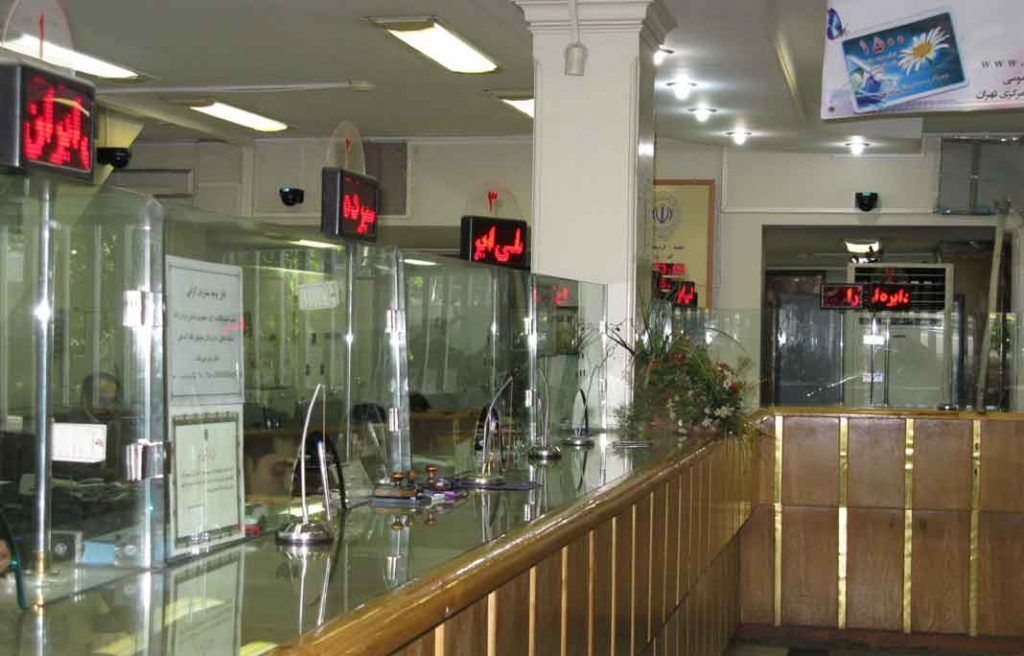April 29, 2017
By Mehdi Dehghan
The Iranian state-run radio and TV (IRIB) is flooded with bank commercials offering attractive interest rates, lines of credit and services that do not accurately reflect the country’s alarming economic woes. Such unrealistic offers and promotions are not based on any rational economic criterion.
On one hand, these adverts may be targeting much-needed new customers to shore up the businesses. On the other hand, these adverts may be aiming to reassure the public that these commercial institutions are still there, functioning.
There are currently 7,000 financial institutions in Iran, the majority of which are operating without a license. The Central bank of Iran (CBI) has taken no action to tackle this problem so far. According to Akbar Komijani, deputy director of CBI, and Hossein Abdoh Tabrizi, advisor to the Ministry of Roads and Urban Development, the main problem revolves around six unlicensed financial institutions which have amassed close to $31 billion in liquid assets.
Many of these banks and financial institutions have close links to the regime’s security apparatus, particularly the Islamic Revolutionary Guards Corps (IRGC), created solely for the purpose of laundering money and funding criminal activities, including trafficking drugs on a massive scale. Farajollah Arefi, the deputy director of the Social Affairs Committee of the Majlis (Iran’s parliament), raised this issue in an open session in 2013.
In a speech at Allameh Tabatabai University, Hadi Behrooz Zonooz, a prominent Iranian economist asserted, “The army, IRGC, law enforcement forces and Tehran Mayor’s office have created and supported six banks. They funnel money through these banks. He added that “government creates the market. Some believe that without a coherent strategy, markets would plunge into chaos. Ultimately, successful management determines the quality of the result.”
Highlighting the current banking crisis in Iran, Zonooz, said, “Banks are in a serious trouble. They receive loans from the CBI with the interest rate of 34%. It is obvious that banks will not be able to pay back the loans.” He added, “The banking system in Iran has collapsed. Some banks continue to operate despite being bankrupt. They, however, don’t advise their clients to withdraw their deposits.” Zonooz doesn’t believe the CBI has the will to confront these banks. He argues: “ There are currently 15 banks in the country including the six in question. The CBI lacks the power to stop them.”
In a lecture delivered in 2015, Mohammad Hossein Adib, a faculty member at Isfahan University’s School of Economics, predicted that over 10 banks and financial institutions would go bankrupt by 2017. Sarmayeh, Qavamin and Mellat top the list of a Google search for Iranian banks on the verge of bankruptcy. Saderat, Ayandeh and Maskan are the most searched Iranian banks on Google.
The Research Centre of the Majlis released a special report on the bankruptcy of the Iranian banks which included a list of workable capital and current assets held by Mellat, Maskan, Sepah and Post banks. According to the report, the ratio between the working capital and current cash assets for the four biggest banks; Mellat, Sepah, Maskan and Post banks are 4.7, 1.7, 4 and 3.6 percent, respectively. A proper ratio between a bank’s working capital and its current assets protects it against possible financial crises. An increase in the current assets, combined with high risk investments, could spell financial disaster for Iranian banks.
There are no clear laws regarding the bankruptcy of banks in Iran. Despite being practically bankrupt, some banks continue to operate and refuse to formally file for bankruptcy. According to the country’s trade laws, state banks are not allowed to file for bankruptcy.
People are ultimately the real losers. A number of protests were held by depositors in front of the CBI building in Tehran. The current trend poses a serious threat to the banking system in Iran.
The third chapter of the country’s banking and monetary law deals with bankruptcy of banks. According to Article 39 of this law, banks are allowed to file for bankruptcy under certain circumstances, and their application must be authorized by CBI’s director and be approved by the Monetary and Credit Council.
According to Article 1 of Unorganized Money Market Law (2005), it is unlawful to establish a bank without first receiving a permit from the CBI. The CBI can stop the operation of an unregistered bank without a court order. It has, however, been ineffective in tackling this problem.
The director of CBI, Valiollah Seif has warned the public against depositing their money in banks which operate without a license. “ Customers should avoid banks that offer very high interest rates on savings. Those are usually the banks that are bankrupt,” Seif stressed.
The director of the CBI’s supervision of banks and credit institutions, Abbas Camry, however, believes the rumours regarding the bankruptcy of certain banks are politically motivated, particularly in view of the May presidential elections. Highlighting the remarks by one of the candidates in the elections, Camry warned against violating the welfare of the public for the purpose of political gain. He said: “Unfortunately such views are expressed by people who lack accurate knowledge in the area of finance and banking.”
“ The banking system shoulders 80% of the country’s financial burden. Banks play a key role in the country’s economy, and therefore, their bankruptcy poses a serious challenge. Non-expert views which lack true understanding of the complicated financial system are unhelpful. Banks worsen the crisis and generate panic among people,” said Seif.
It is worth noting that any adverse outside influence, such as worsening of Iran’s relationships with other countries, or the imposition of new sanctions by the West, could trigger the collapse of the banking system in Iran.



